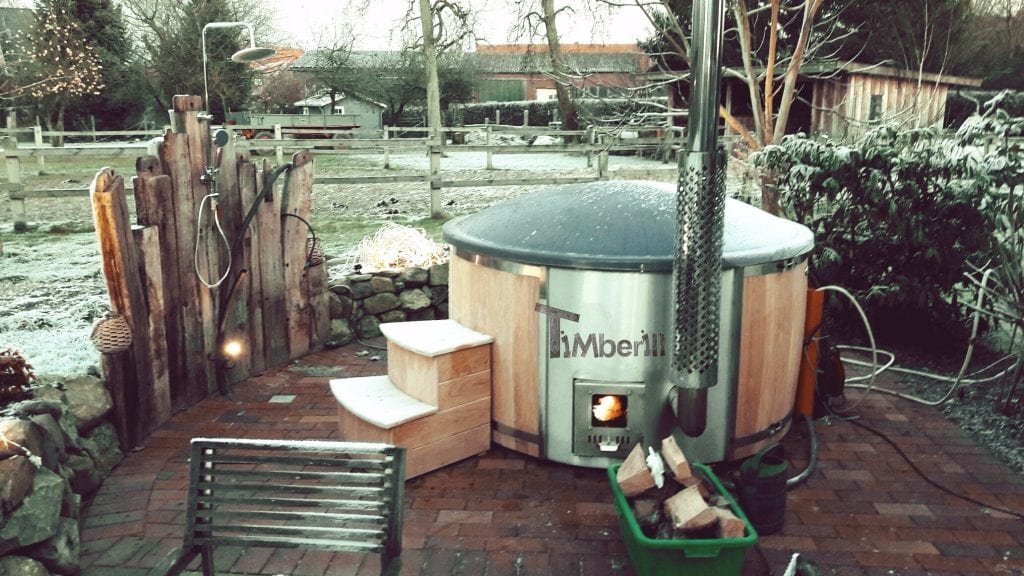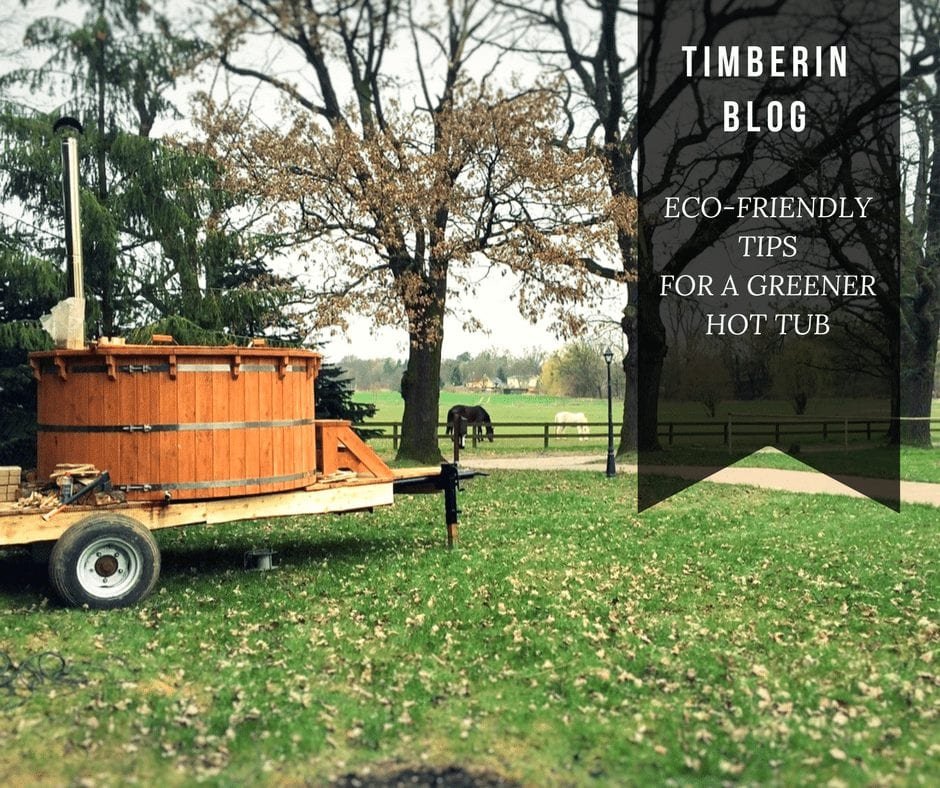Friends/family + a steaming hot tub = a wonderful time guaranteed! Though let‘s not forget another integral part of this equation – the surrounding natural environment.
The surrounding natural environment is an integral part of enjoying a steaming hot tub with friends and family. Whether it is a breath-taking view to gaze upon or a colorful and fragrant garden to enjoy, our environment adds so much to this experience. The Earth gives to us all the time – let‘s return the favor! Follow these small and simple steps towards a greener hot tub.
Saving water
– go for a hot tub with closed benches. Fiberglass hot tubs with moulded benches and polypropylene models with closed benches require significantly less water than hot tubs with wooden benches or open polypropylene benches. For example, the Wellness Royal, with 1800mm internal diameter requires about 1200l of water, whereas a wooden hot tub with the same diameter, but wooden benches, would need at least 1400l.

– use chemical sanitizers to keep the water in good condition longer. Without any chemical treatment, water should be refilled at least once a week and in the summer, during the peak bathing season, this becomes a strain. Not only on the environment but a financial concern as well. Chlorine and bromine sanitizers may not seem like the most environmentally friendly alternative; however such sanitizers are the key to minimizing water changing frequency. Small doses are enough to battle bacteria and maintain the water in good condition for longer periods of time. Chemicals should be added at night, as UV rays break down chlorine-based sanitizers, which results in excess waste. Note: chemical sanitizers are only compatible with 316-grade stainless steel heaters.
– use a filter to purify the water. Filters remove small dirt particles that settle on the hot tub floor. Without one, the hot tub must be fully drained and the dirt swept or collected manually. A time-consuming errand that leads to more water waste can be avoided by using a cartridge or sand filter. It should be noted that sand filters are regarded for their longevity compared to cartridge filters – depending on use, the sand in the filter has to be changed very seldom – once every 3 to 5 years.
Saving energy
– always keep the hot tub covered when heating and after bathing. The simplest of changes, such as remembering to keep the cover on during heating and after stepping out of the hot tub, have the biggest impact. By keeping the hot tub covered, it is much more difficult for the heat to escape, so the temperature drop overnight (depending on outside temperature) can be as little as 5 degrees Celsius. Not only is this highly effective in the summer, but helpful during the winter as well.

– invest in insulation. If there is one addition that will make a significant difference, it is insulation. Insulated bottom, walls, and lid protect the water inside from the cold ground and harsh outside temperatures and keep the water warmer for longer.

– choose an internal heater instead of external to minimize heat loss. Though external heaters to allow for more space in the hot tub, they are not the most efficient choice when it comes to saving energy, as some heat escapes through the hoses connecting the heater to the hot tub. Internal heaters, on the other hand, lose virtually no heat, as they are submerged in the hot tub water. An added bonus is quicker heat diffusion.
– give alternative energy sources a try. If you happen to have a solar panel, it can be connected to the hot tub through the filter or external heater pipes. If you are up for a DIY project, a standard black garden hose can be turned into a solar heater as well. Attach one end of the garden hose to the upper filter connection, close the valve. Wind the garden hose into a large flat coil, making sure it is under direct sunlight. Close the other end of the garden hose as well and let it sit in the sunlight. After some time has passed, check on the hose. If it feels hot enough, empty the heated water into the hot tub.
Waste management
– safe drainage of chemically-treated water. When emptying a hot tub that had the chlorinated, brominated or other types of chemically treated water, make sure the drain water does not enter a clean water supply. It is best to redirect such drain water into a sewage system or an empty field, where it will not affect the flora and fauna.
– recycle chemical-free water. If no chemicals were used to treat the hot tub water, it can be used for other purposes, such as watering the lawn, washing a deck or a terrace.
– use gentle household chemicals for cleaning. Maintenance of fiberglass and polypropylene liners is very straightforward – a sponge or soft scrub brush together with white vinegar or some baking soda works magic. Put vinegar in a spray bottle and spray it where needed, let it sit for 15 to 20 minutes and scrub away with a sponge or a soft brush. Baking soda can be turned into a cleaning paste by adding some water and then applied to water stains or dirt rings.
can hot tub water kill grass
Well, it depends if the water treatment chemicals were used. If chlorine was used, water should be drained to a designated area. If only the filters were used, yes, water can be drained directly on the grass
are hot tubs environmentally friendly
Yes they are and you can read some advice on how to make them even more environmentally friendly


